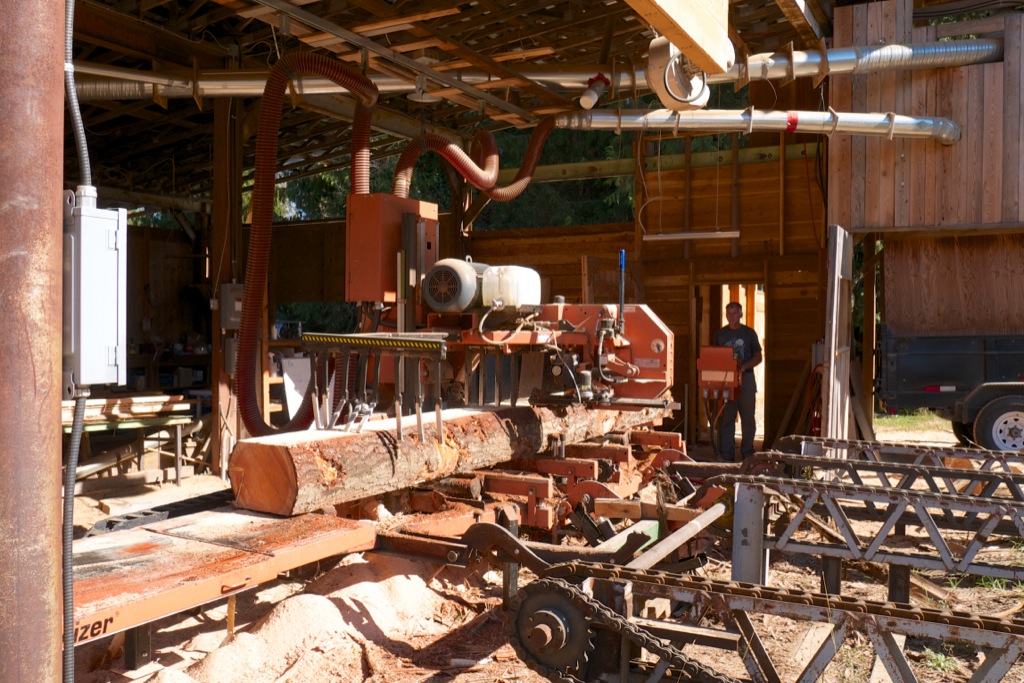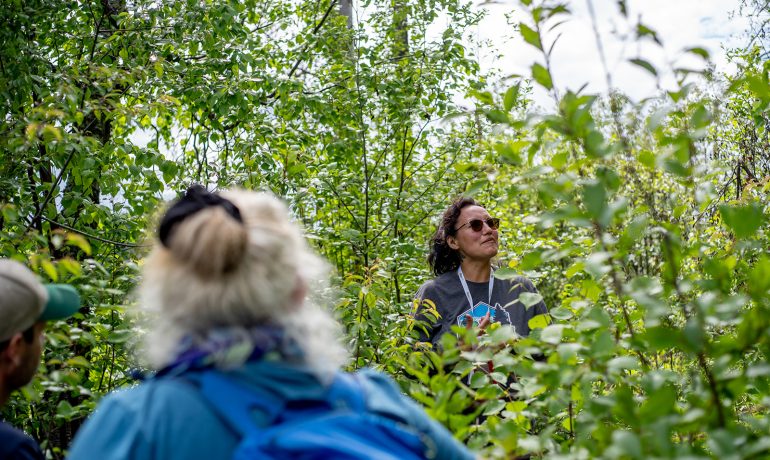The Valley Voice April 6, 2016 by Art Joyce
While the details may change with the realities of day-to-day forestry operations, a clear founding vision provides essential direction. For HarropProcter Community Forest – one of the first such tenures granted in BC – that has meant a mandate based on Silva Forestry Foundation methodology. ‘Take the interest and leave the principal’ is the guiding ethic. “
At Harrop-Procter we used our ecosystem-based planning approach, lowering our Allowable Annual Cut (AAC) considerably from what the ministry thought we should cut,” says Herb Hammond, founder of the Silva method. “In the early days there was a lot of pressure to get our AAC up. One of the ministry people came out and we went through it with them, and they said, ‘Well this is all very sound, you guys just have different values than we do.’”
Rami Rothkop was a treeplanting contractor and parks activist before being hired as the value-added manager for Harrop-Procter’s mill. He says those early negotiations with the ministry allowed the community forest to start with an AAC of only 2,600 cubic metres in an 11,300-hectare tenure that includes four major domestic watersheds. “We took a precautionary approach and that makes total sense, because water should be higher up the value chain than timber. Flash forward to 2016 and our cut level is 10,000 cubic metres; we’ve added area, the forests are denser than we thought, there’s more stable terrain than indicated in our initial analysis, and we’ve realized there’s huge fire risk in some of the stands.”
The original 1999 Silva Plan framework continues to be held to in principle but with more ‘ground truth’ collected since then, the management plan was rewritten in 2012. Old growth stands are left untouched to preserve genetic diversity. Sixty percent of the logging is done on a selective basis, so partial cuts can be allowed to regenerate naturally. Further, with the steep terrain of much of their tenure, some timber stands are marginal.
“Because we have a low risk tolerance for impacting water quality, that often means not cutting in risky areas,” says Forest Manager Erik Leslie. Harrop-Procter has embarked on a two-year climate change adaptation plan funded by Columbia Basin Trust, based on projections of 5–50 times higher rates of wildfires in the coming decade. The plan will include thinning undergrowth to reduce fuel load and planting more drought-resistant species.
Community forests create 50 percent more jobs than industrial logging, which creates less than one job per cubic metre cut. Because Harrop-Procter has its own mill, that figure is considerably higher – four jobs per cubic metre. Its mill is on leased land but the equipment is already paid for, with six jobs at the mill and four full-time equivalents in planning, layout, supervision, administration, logging, road building, log hauling, tree planting, and various contractors and consultants. The mill turns out an impressive array of specialty products: tongue-in-groove paneling, channel siding and decking in cedar, Douglas fir timber framing material and flooring, and live-edge countertops, to name a few.
“I think there’s a place for large mills, they can do work that we can’t do,” says Rothkop. “But we have to start being more innovative instead of just pumping out dimensional lumber.”
Does Rothkop think the government needs to rewrite forest tenures legislation to better reflect the realities of the 21st century? “If I was 35, I’d start a tenure reform campaign. We’re cutting too much in BC anyway, especially given the looming impacts of climate change. And yet there’s not enough timber to go around because it’s all allocated. There should be the political will to take back some of the tenure and reallocate based on jobs created per cubic metre, water values and community needs.”
And unfortunately, despite the best of intentions, there are always those who will ‘game the system,’ as for example with Forest Stewardship Certification (FSC). Although Harrop-Procter is so far the only community forest to obtain FSC status, Rothkop says this doesn’t necessarily mean anything. A recent report produced by the Alberta Wilderness Association (AWA) showed how one large sawmill company in that province, seeking FSC certification for their products, hired independent auditor SmartWood to assess their forest operations. They found 60 infractions, basically flunking them. So the company hired another certifier that only found two infractions, passing them for FSC. “When I hear this, I think, well then what’s the point of standards?” asks Rothkop. “I have increasing concerns about FSC. We’re already so far beyond FSC standards at HarropProcter anyway.” In its report, the AWA stated: “FSC must undergo a fundamental policy change to gain control over auditing services so they are truly independent of industry.”
H a r r o p – P r o c t e r ’s F o r e s t Stewardship Plan is quite specific regarding threatened or endangered species. “With the exception of mountain caribou, we have never encountered any red- or blue-listed species habitat in any of our planned logging areas,” says Leslie. However, should such species be encountered, their management plan requires a professional biologist to design a site-specific conservation strategy for the species at risk prior to implementation of any forest activities.
Hammond says that registered professional foresters (RPFs) are schooled in a system dominated by industrial forestry, reinforcing their values. As Leslie explains, with less than two percent of the operable land base allocated to Community Forests, few RPFs can spend an entire career in community forestry. “Foresters aren’t running forestry anymore, accountants are,” concludes Rothkop. “As long as that’s the case, we won’t always make the right ecological decisions. Foresters often end up in a conflict of interest, between their code of ethics and the profit agenda of the corporations they work for.”
Related Post
As Published in Canadian Forest Industries Magazine, Pulp & Paper Magazine and Canadian Biomass Magazine
Jennifer Gunter’s Op Ed, “Community Forests: Rooted in Community,
Minister of Forests Mandated to Expand BC’s Community Forest Program
In the recently released mandate letter to the Minister



